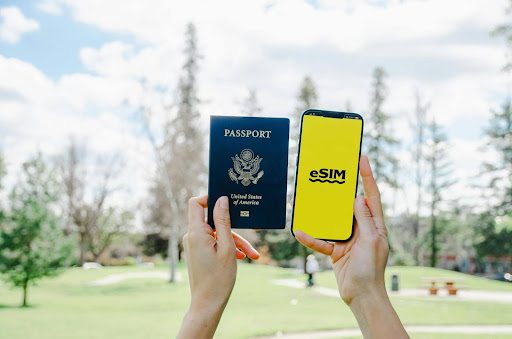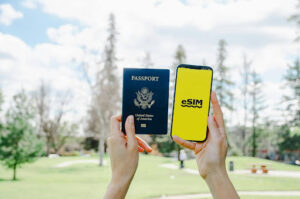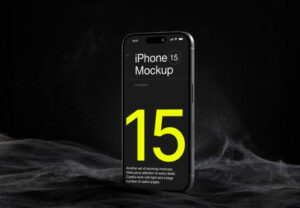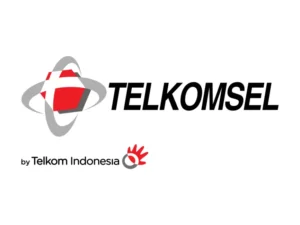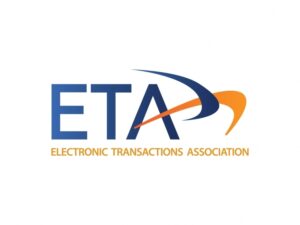You’ve just landed in Tokyo after a 14-hour flight, exhausted but excited to explore the bustling streets of Shibuya. You turn on your phone to share your arrival on social media, only to be greeted by a notification that roaming charges will cost you $15 per day. Your heart sinks as you realize that staying connected during your two-week adventure could cost more than your hotel.
This scenario plays out thousands of times daily as international travelers grapple with connectivity challenges that can quickly turn dream vacations into budget nightmares. Between sky-high roaming fees, unreliable public Wi-Fi, and the hassle of hunting down local SIM cards in foreign countries, staying connected abroad has traditionally been a major pain point for tourists.
Enter the travel eSIM – a revolutionary technology that’s transforming how we stay connected while exploring the world. This digital solution eliminates the frustrations of traditional connectivity methods, offering seamless, affordable, and secure internet access across multiple countries without the need to swap physical SIM cards or rely on sketchy public networks.
Throughout this comprehensive guide, we’ll explore exactly how travel eSIMs address the most common connectivity woes faced by international tourists, and why this technology is quickly becoming an essential travel companion for savvy globetrotters.
The Connectivity Challenges International Tourists Face
Modern travelers face a perfect storm of connectivity challenges that can significantly impact both their budgets and their travel experiences. Understanding these pain points is crucial for recognizing why traditional solutions often fall short and how innovative alternatives like eSIM technology are reshaping the travel landscape.
Sky-High Roaming Charges That Ruin Budgets
International roaming charges remain one of the most shocking expenses travelers encounter. Major carriers often charge between $10-$15 per day for basic international plans, with premium options reaching $20 or more. These costs add up frighteningly fast – a two-week European vacation could easily result in $300 worth of roaming fees alone.
The situation becomes even worse when travelers exceed their daily limits or use data-intensive services. Video calls home, GPS navigation, or uploading photos to social media can trigger overage charges that range from $0.50 to $2 per megabyte. Stories abound of travelers returning home to phone bills exceeding $1,000 for what they thought was moderate usage during a week-long trip.
Even more frustrating is the unpredictability of these charges. Different countries have varying rate structures, and what costs $10 per day in one European nation might cost $25 in a neighboring country. This uncertainty makes it nearly impossible to budget accurately for connectivity expenses.
Unreliable Public Wi-Fi and Security Risks
Many budget-conscious travelers attempt to avoid roaming charges by relying exclusively on public Wi-Fi networks. While this strategy might seem financially savvy, it creates its own set of problems that can be even more costly in the long run.
Public Wi-Fi networks in airports, cafes, hotels, and tourist areas are notoriously unreliable. Connection speeds often crawl at a frustrating pace, making simple tasks like checking email or getting directions feel impossible. Even worse, these networks frequently experience outages or have limited bandwidth that becomes unusable during peak hours.
The security risks associated with public Wi-Fi are perhaps even more concerning than reliability issues. Cybercriminals frequently target tourist-heavy areas with fake hotspots designed to steal personal information. Unsecured networks can expose sensitive data like banking information, passwords, and personal communications to malicious actors.
Real-world consequences of these security breaches can be devastating. Travelers have reported unauthorized access to their bank accounts, identity theft, and compromised social media profiles after connecting to compromised public networks. The financial and emotional costs of dealing with these issues often far exceed what they would have spent on secure connectivity solutions.
The Hassle of Buying and Swapping Local SIM Cards
The traditional alternative to roaming and public Wi-Fi – purchasing local SIM cards – presents its own unique challenges that can be particularly daunting for international travelers.
Finding reliable SIM card vendors in foreign countries often involves navigating language barriers, unfamiliar payment systems, and varying store hours. Many travelers waste precious vacation time searching for mobile shops, only to discover that popular tourist areas often have limited options or inflated prices.
The process of purchasing and activating local SIM cards can be surprisingly complex. Requirements vary by country – some need passport verification, others require local addresses, and many involve lengthy registration processes that can take hours to complete. Language barriers can make these procedures even more confusing and time-consuming.
Perhaps most problematically, swapping SIM cards means temporarily losing access to your home phone number. This can disrupt important communications, make it difficult for family to reach you in emergencies, and complicate two-factor authentication for banking and other essential services.
Device compatibility issues add another layer of complexity. Not all international SIM cards work with every phone model, and some carriers use different network technologies that may not be compatible with devices purchased in other countries. Travelers often discover these compatibility issues only after purchasing the SIM card, leaving them with expensive but useless plastic.
What is a Travel eSIM and How Does It Work?
Understanding eSIM technology is key to appreciating how it solves the connectivity challenges that have plagued international travelers for decades. This revolutionary approach to mobile connectivity represents a fundamental shift from physical SIM cards to digital solutions that offer unprecedented flexibility and convenience.
Understanding eSIM Technology in Simple Terms
An eSIM, or embedded SIM, is essentially a digital version of the traditional plastic SIM card that’s built directly into your smartphone. Instead of a removable chip that stores your carrier information, an eSIM uses a small programmable chip that’s permanently integrated into your device’s hardware.
The magic happens through software rather than hardware swapping. When you want to activate a new mobile plan, instead of physically inserting a new SIM card, you simply scan a QR code or download a carrier profile through an app. This digital activation process typically takes just a few minutes and can be completed from anywhere with an internet connection.
Think of an eSIM like having multiple ID badges for different buildings, but instead of carrying separate physical cards, you have a smart badge that can instantly switch between different access permissions based on which building you’re entering. Your phone can store multiple carrier profiles simultaneously and switch between them as needed.
Most modern smartphones manufactured after 2018 include eSIM capability alongside traditional SIM card slots. This dual-SIM functionality means you can maintain your home phone number on a physical SIM while using an eSIM for international data, combining the best of both worlds.
Why eSIMs Are Perfect for International Travel
The travel-specific advantages of eSIM technology address virtually every pain point associated with traditional connectivity solutions. The instant activation capability means you can purchase and set up international data plans before leaving home, eliminating the stress of finding connectivity solutions upon arrival.
Multi-country coverage is where eSIMs truly shine for international travelers. A single eSIM plan can provide coverage across dozens of countries, automatically connecting to the strongest available network as you cross borders. This seamless transition means you can travel from London to Paris to Rome without worrying about changing SIM cards or purchasing new plans in each destination.
The flexibility of eSIM technology extends to plan management as well. Many providers offer the ability to pause, resume, or modify your plan remotely through smartphone apps. If you’re spending a few days in areas with reliable Wi-Fi, you can pause your data usage to extend your plan’s validity period.
Security advantages make eSIMs particularly appealing for travelers. The digital activation process includes built-in encryption and authentication measures that are significantly more secure than traditional SIM cards. Since there’s no physical card to lose or steal, the risk of SIM swapping attacks is virtually eliminated.
How a Travel eSIM Solves Common Traveler Pain Points
The real-world benefits of travel eSIM technology become most apparent when examining how it directly addresses the specific challenges that frustrate international tourists. From budget concerns to security worries, eSIMs offer practical solutions that enhance the entire travel experience.
Affordable Data Plans to Keep Your Budget Intact
Travel eSIM providers typically offer data plans that cost 60-80% less than traditional roaming charges. Where major carriers might charge $15 per day for 1GB of international data, eSIM providers often offer similar coverage for $3-5 per day, with larger data allowances and longer validity periods.
The savings become even more dramatic for longer trips or higher data usage. A 30-day European travel plan with 10GB of data might cost $40-60 through an eSIM provider, compared to $450 for equivalent roaming coverage from a traditional carrier. For travelers who rely heavily on data for navigation, communication, and entertainment, these savings can literally pay for additional days of vacation.
Prepaid eSIM plans eliminate the uncertainty and shock of post-trip billing. You know exactly what you’re spending upfront, and there are no surprise overage charges since most plans simply throttle speeds or stop working when data limits are reached. This predictability makes it much easier to budget accurately for travel expenses.
Regional and global eSIM plans offer even better value for multi-country trips. Instead of purchasing separate data plans for each destination, travelers can buy comprehensive coverage that works across entire continents or worldwide. These plans often cost less than single-country options while providing significantly more flexibility.
Seamless Connectivity Across Multiple Countries
The automatic network switching capability of travel eSIMs eliminates one of the most frustrating aspects of international travel – manually configuring network settings in each new country. Your phone automatically connects to the strongest available partner network as you cross borders, ensuring uninterrupted connectivity throughout your journey.
This seamless transition is particularly valuable for travelers exploring regions like Europe, where you might visit multiple countries in a single day. With traditional SIM cards, each border crossing could require purchasing new local plans or dealing with expensive roaming charges. eSIMs handle these transitions invisibly, allowing you to focus on enjoying your travels rather than managing connectivity logistics.
For business travelers or those with tight itineraries, the time savings are substantial. Instead of spending precious hours in each new destination searching for SIM card vendors and completing activation processes, you can step off the plane or train with instant, reliable connectivity.
The coverage quality often exceeds what’s available through traditional roaming agreements. Many eSIM providers partner with premium local networks in each country, ensuring you get the best possible speeds and coverage rather than being limited to your home carrier’s roaming partners.
Enhanced Security for Peace of Mind
Travel eSIMs significantly reduce dependence on risky public Wi-Fi networks by providing reliable, secure internet access wherever cellular coverage is available. This independent connectivity means you can safely conduct online banking, access work systems, or communicate sensitive information without worrying about network security.
The activation and authentication processes for eSIM technology include multiple layers of security that surpass traditional SIM cards. Digital certificates, encrypted communications, and secure provisioning protocols protect against various types of attacks that target traditional mobile connectivity.
For travelers who need to access sensitive information or conduct business while abroad, the security advantages of eSIM connectivity often justify the cost even when free Wi-Fi is available. The peace of mind that comes from knowing your communications are secure is invaluable for both personal and professional travelers.
Additionally, the remote management capabilities of eSIM technology mean you can quickly disable or modify your plan if your device is lost or stolen, providing an additional layer of security that’s impossible with traditional SIM cards.
Discover Simify: Your Go-To Solution for Hassle-Free Travel Connectivity
When it comes to finding reliable travel eSIM solutions, Simify stands out as a comprehensive platform designed specifically with international tourists in mind. The company has built its reputation by addressing the real-world challenges travelers face, offering solutions that prioritize ease of use, affordability, and global coverage.
Simify’s approach to travel connectivity focuses on eliminating the complexity that often intimidates travelers new to eSIM technology. Their user-friendly platform guides customers through the entire process, from selecting the right plan for specific destinations to providing step-by-step activation instructions that work for travelers of all technical skill levels.
The company’s global network partnerships ensure reliable coverage in over 190 countries, with plans specifically optimized for popular travel routes and destinations. Whether you’re looking for the travel e sim options for a cross-country American road trip or need comprehensive coverage for a multi-country European adventure, Simify offers tailored solutions that match your specific travel needs.
What sets Simify apart is their commitment to customer support throughout the travel experience. Their 24/7 support team understands the unique challenges travelers face when dealing with connectivity issues in unfamiliar locations. Whether you need help with initial setup, troubleshooting connectivity problems, or adding additional data during your trip, support is always available through multiple channels.
The platform’s instant QR code delivery system means you can purchase and receive your eSIM activation codes within minutes of completing your order. This speed is crucial for last-minute travelers or those who prefer to handle travel preparations close to their departure date.
Simify’s transparent pricing structure eliminates the hidden fees and surprise charges that plague traditional roaming solutions. All costs are clearly displayed upfront, with detailed information about data allowances, validity periods, and coverage areas, allowing travelers to make informed decisions about their connectivity needs.
Tips for Choosing and Using a Travel eSIM Effectively
Successfully implementing eSIM technology for travel requires understanding both the technical requirements and practical considerations that can make or break your connectivity experience abroad. These insights can help you avoid common pitfalls and maximize the benefits of your travel eSIM investment.
Check Your Device Compatibility Before You Go
Not all smartphones support eSIM technology, and compatibility can vary even among devices from the same manufacturer. The easiest way to check eSIM support on most phones is to look for the eSIM option in your cellular settings menu. On iPhones, navigate to Settings > Cellular, while Android users should check Settings > Network & Internet > SIMs.
For iPhone users, eSIM support is available on iPhone XS, XR, and all newer models, but international compatibility can vary depending on where the device was purchased. Some iPhones sold in certain countries like China don’t include eSIM functionality, even if the same model supports it elsewhere.
Android eSIM support is more fragmented, with availability depending on both the device manufacturer and the specific carrier or retailer version. Popular models like Google Pixel phones (Pixel 3 and newer), Samsung Galaxy S20 series and newer, and most recent flagship devices from major manufacturers include eSIM support.
If your primary device doesn’t support eSIM technology, consider whether upgrading makes financial sense for frequent travelers. Alternatively, some travelers choose to carry a secondary eSIM-compatible device specifically for international connectivity, though this approach adds complexity and weight to travel preparations.
For devices that support both traditional SIM cards and eSIM technology, you can maintain your home phone number on the physical SIM while using the eSIM for international data. This dual-SIM configuration provides the optimal balance of maintaining accessibility through your regular number while avoiding expensive roaming charges.
Select the Right Data Plan for Your Trip
Accurately estimating your data needs is crucial for selecting cost-effective eSIM plans that provide adequate coverage without unnecessary expense. Your data consumption while traveling often differs significantly from home usage patterns, influenced by factors like increased navigation usage, photo uploads, and communication needs.
Navigation apps typically consume 5-10MB per hour of active use, making GPS one of the most significant data consumers for many travelers. If you plan to rely heavily on turn-by-turn directions or explore areas without offline maps, factor this usage into your plan selection. Downloading offline maps before your trip can significantly reduce ongoing data consumption.
Social media usage patterns also change dramatically during travel. The desire to share experiences in real-time through photo and video uploads can quickly consume data allowances. High-resolution photos might use 3-5MB each when uploaded, while short videos can easily consume 10-20MB or more depending on quality settings.
Video calling home is another major data consumer that travelers often underestimate. A 30-minute video call typically uses 150-300MB of data, making daily check-ins with family a significant factor in plan selection for longer trips.
For typical leisure travelers, 1-2GB per week provides adequate coverage for moderate usage including navigation, social media, messaging, and occasional video calls. Business travelers or those planning to stream content or work remotely should consider plans with 3-5GB per week or more.
Consider the flexibility options available with different eSIM providers. Some offer the ability to purchase additional data if you exceed your initial allowance, while others provide unlimited plans with speed throttling after certain thresholds. Understanding these options helps you choose plans that match your risk tolerance and budget constraints.
Set Up Your eSIM Before Departure
Activating your travel eSIM while still at home provides the opportunity to test connectivity and resolve any issues before you depend on it abroad. This preparation can prevent frustrating situations where you arrive at your destination without working data connectivity.
The typical eSIM activation process begins with purchasing your plan and receiving a QR code via email. Make sure to download and save this QR code to your device’s photo library as a backup, since you’ll need internet access to retrieve it from email during activation.
Most eSIM activations require scanning the QR code through your device’s camera app or cellular settings menu. The exact process varies between iPhone and Android devices, but generally involves navigating to cellular settings and selecting the option to add a new cellular plan.
During the setup process, you’ll typically need to assign labels to distinguish between your home SIM and travel eSIM. Choose descriptive names like “Home” and “Travel” or “US Travel” to avoid confusion when selecting which connection to use for data or calls.
Configure your device to use the eSIM for cellular data while maintaining your home SIM for calls and messages. This configuration allows you to receive important calls and texts on your regular number while using the cost-effective eSIM for internet access.
Test your eSIM connectivity before traveling by temporarily switching your data connection to the travel eSIM. Some plans activate immediately upon setup, while others only begin working when you arrive in the destination country. Understanding which type you’ve purchased helps set appropriate expectations.
Take screenshots of your eSIM settings and activation confirmations as a reference for troubleshooting if issues arise during travel. Having these reference materials available offline can be invaluable when dealing with connectivity problems in unfamiliar locations.
Regional Considerations for eSIM Travel Plans
Different regions of the world present unique considerations for travel eSIM selection, influenced by factors like network infrastructure, regulatory environments, and coverage partnerships. Understanding these regional differences helps travelers make informed decisions about connectivity solutions for specific destinations.
European travel presents one of the most mature eSIM markets, with extensive coverage and competitive pricing due to EU roaming regulations. Many providers offer comprehensive esim europe unlimited data plans that work seamlessly across all EU countries plus popular destinations like the UK, Switzerland, and Norway. The regulatory environment in Europe has fostered competition among eSIM providers, resulting in some of the most affordable international data rates available globally.
The United Kingdom, despite Brexit, remains well-integrated into European eSIM coverage networks. Travelers visiting Britain can often find specialized uk travel esim options that provide excellent coverage throughout England, Scotland, Wales, and Northern Ireland, with many plans extending to include Ireland and other nearby destinations.
North American eSIM coverage benefits from advanced network infrastructure and widespread 5G deployment, though pricing can be higher than European alternatives due to different market dynamics. Coverage in rural areas of the United States and Canada is generally excellent, making eSIMs particularly valuable for travelers planning road trips or visits to national parks.
Asian markets present a mixed landscape for eSIM travelers. Countries like Japan, South Korea, and Singapore offer excellent eSIM coverage with high-speed networks, while other destinations may have more limited options or higher pricing. The rapid expansion of eSIM technology across Asia means coverage options are constantly improving, but travelers should research specific country availability before departure.
Developing markets in Africa, South America, and parts of Asia may have limited eSIM provider partnerships, though coverage is expanding rapidly. Travelers to these regions should verify coverage availability and consider backup connectivity options like traditional SIM cards or satellite communication devices for remote areas.
Troubleshooting Common eSIM Issues While Traveling
Even with proper preparation, travelers may occasionally encounter eSIM connectivity issues that require troubleshooting in unfamiliar environments. Understanding common problems and their solutions can help resolve issues quickly and minimize disruption to travel plans.
Network selection problems are among the most common eSIM issues, particularly in areas with multiple competing carriers. If your eSIM isn’t connecting automatically, try manually selecting different available networks through your device’s carrier settings. Sometimes switching to a different partner network resolves connectivity issues immediately.
APN (Access Point Name) configuration problems can prevent internet access even when your device shows cellular signal bars. Most eSIM providers include APN settings in their activation instructions, but these settings sometimes need manual adjustment. Contact your eSIM provider’s support team for specific APN configurations if automatic settings aren’t working.
Device restart often resolves temporary connectivity glitches that can occur during travel. Power cycling your phone allows it to re-establish network connections and refresh its connection to local cellular towers. This simple step resolves many minor eSIM issues without requiring technical troubleshooting.
Data roaming settings must be enabled for eSIM plans to function properly in international destinations. Even though you’re using a local eSIM, your device may still consider it “roaming” and block data access if roaming is disabled in your settings.
If you experience persistent connectivity issues, try removing and re-adding your eSIM profile. This process essentially performs a fresh installation of your eSIM configuration, which can resolve corrupted settings or temporary glitches that develop during travel.
Conclusion
The evolution of travel connectivity has reached a turning point with eSIM technology, offering international tourists a solution that directly addresses the most persistent pain points of staying connected abroad. From eliminating the shock of excessive roaming charges to providing secure, reliable internet access across multiple countries, travel eSIMs represent a fundamental improvement over traditional connectivity methods.
The financial benefits alone make eSIM technology compelling for most international travelers. The ability to reduce connectivity costs by 60-80% while improving reliability and security creates obvious value that extends well beyond simple cost savings. When you factor in the time savings, reduced stress, and enhanced security that eSIMs provide, the case for adoption becomes even stronger.
Perhaps most importantly, eSIM technology removes the connectivity anxiety that has long plagued international travel. No more hunting for SIM card shops in foreign countries, no more worrying about whether public Wi-Fi is safe for banking, and no more surprise charges that can derail travel budgets. Instead, travelers can focus on what matters most – experiencing new cultures, creating memories, and enjoying the freedom that comes with seamless global connectivity.
The technology continues to mature rapidly, with expanding coverage, improving pricing, and enhanced features that make international connectivity more accessible than ever before. For travelers ready to embrace this technological advancement, the benefits are immediate and substantial.
As you plan your next international adventure, consider how travel eSIM technology can transform your connectivity experience from a source of stress into a seamless enabler of global exploration. The future of travel connectivity is here, and it’s more accessible, affordable, and secure than traditional solutions ever promised to be.
FAQs About Travel eSIMs for International Tourists
Are Travel eSIMs Compatible with All Smartphones?
Travel eSIM compatibility depends on your specific device model and where it was manufactured. Most smartphones released after 2018 include eSIM capability, including iPhone XS and newer models, Google Pixel 3 and later, Samsung Galaxy S20 series and newer, and most recent flagship Android devices.
However, compatibility isn’t universal even among supported models. Some devices sold in certain countries or through specific carriers may have eSIM functionality disabled. The most reliable way to confirm compatibility is checking your device’s cellular settings for eSIM options or contacting your device manufacturer directly.
If your current phone doesn’t support eSIM technology, you have several options. Many travelers choose to upgrade to a compatible device if they travel frequently, as the long-term savings on connectivity costs often justify the investment. Alternatively, you can continue using traditional SIM cards or consider carrying a secondary eSIM-compatible device specifically for travel.
How Much Can I Save with a Travel eSIM Compared to Roaming?
The savings potential with travel eSIMs compared to traditional roaming can be substantial, typically ranging from 60-80% cost reduction for most destinations and usage patterns. Where major carriers might charge $10-15 per day for basic international roaming with limited data allowances, eSIM providers often offer similar or better coverage for $3-5 per day with larger data allowances.
For a typical two-week European vacation, traditional roaming might cost $200-300 through major carriers, while comprehensive eSIM coverage for the same trip often costs $40-80. The savings become even more dramatic for longer trips or higher data usage, with some travelers reporting savings of $500 or more on extended international trips.
The exact savings depend on several factors including your destination, data usage patterns, and home carrier’s roaming rates. Business travelers or those who rely heavily on data for navigation, communication, and work purposes typically see the largest absolute savings, while even light users benefit from the predictable, prepaid pricing structure that eliminates surprise charges.
Can I Use a Travel eSIM in Multiple Countries on One Plan?
Yes, many travel eSIM providers offer multi-country and regional plans that work seamlessly across dozens of destinations without requiring separate purchases or activations for each country. These regional plans are particularly popular for areas like Europe, where travelers often visit multiple countries during a single trip.
Multi-country eSIM plans automatically connect to the strongest available partner network as you cross borders, providing uninterrupted connectivity throughout your journey. For example, a European eSIM plan might provide coverage across all EU countries plus the UK, Switzerland, Norway, and other popular destinations, all under a single data allowance and billing structure.
Global eSIM plans extend this concept even further, offering worldwide coverage that can include 100+ countries under a single plan. While global plans typically cost more than regional options, they provide excellent value for travelers visiting multiple continents or those who want maximum flexibility without worrying about coverage limitations.
The convenience of multi-country plans extends beyond just connectivity – they eliminate the need to research local data options for each destination, purchase multiple SIM cards, or manage different activation processes throughout your trip.
What Happens If I Run Out of Data on My Travel eSIM?
When you exhaust your travel eSIM data allowance, the consequences depend on your specific plan type and provider policies. Most eSIM providers offer several options to handle data depletion, giving you flexibility to manage connectivity throughout your trip.
Many eSIM plans include automatic speed throttling after you reach your high-speed data limit. Instead of cutting off connectivity entirely, your connection continues at reduced speeds (typically 128-256 kbps) that still allow basic functions like messaging, email, and navigation, though streaming and large downloads become impractical.
Top-up options are available with most eSIM providers, allowing you to purchase additional data through mobile apps or websites without needing to replace your eSIM or visit physical stores. These add-on purchases typically activate within minutes and extend your existing plan rather than starting a new service period.
Some providers offer unlimited plans with fair usage policies, where speeds are reduced after certain thresholds but connectivity never stops completely. These plans provide peace of mind for travelers who prefer predictable costs without worrying about monitoring data usage constantly.
The best approach is monitoring your data usage through your device’s built-in tools and your eSIM provider’s app, allowing you to purchase additional data before completely running out if needed.
Is It Safe to Use a Travel eSIM for Sensitive Activities Like Banking?
Travel eSIMs are generally much safer for sensitive activities like online banking compared to public Wi-Fi networks, though following basic security practices remains important regardless of your connectivity method. The cellular network infrastructure used by eSIMs includes multiple layers of encryption and security protocols that significantly exceed the protection available on most public Wi-Fi networks.
eSIM technology itself incorporates advanced security features including encrypted activation processes, secure authentication protocols, and protection against SIM swapping attacks that can compromise traditional physical SIM cards. The digital nature of eSIM provisioning includes multiple verification steps that make unauthorized access extremely difficult.
However, no connectivity method is completely immune to security risks, so following standard online security practices remains crucial. Use banking apps rather than web browsers when possible, enable two-factor authentication on all accounts, keep your device’s operating system updated, and avoid clicking suspicious links or downloading untrusted apps while traveling.
For maximum security during sensitive activities, consider using a VPN service in addition to your eSIM connectivity. This adds an extra layer of encryption and can help protect your data even on the secure cellular networks that eSIMs provide.
The key advantage of eSIM connectivity is that it eliminates your dependence on potentially compromised public Wi-Fi networks, giving you secure internet access whenever cellular coverage is available rather than forcing you to trust unknown network operators in tourist areas.

